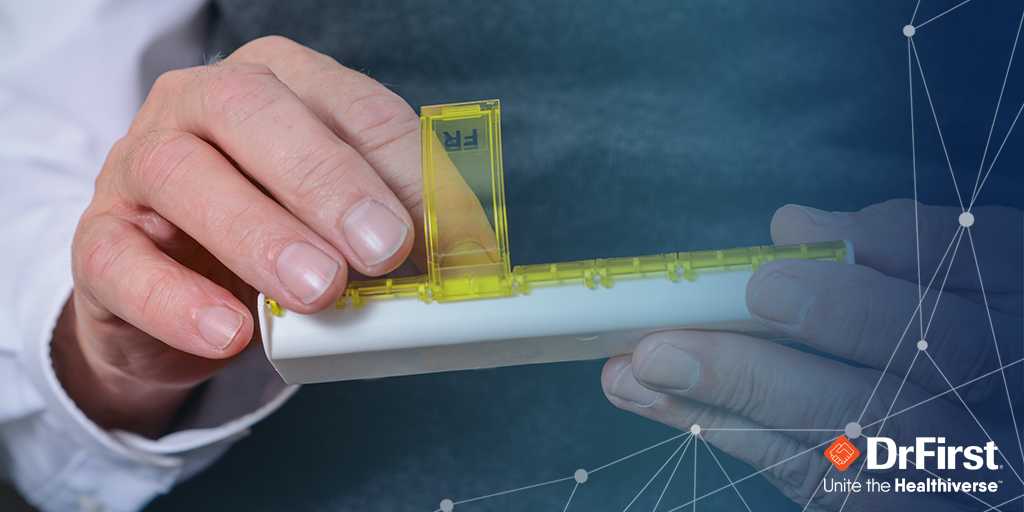Eric W. Weidmann, M.D.
Guest Post: Better-Informed Physicians Deliver Superior Care to Patients
Twenty years ago, physicians spent time in the hospital dining room discussing shared patients and bouncing ideas off each other about the best course of treatment. Today, with patient care fragmented across various health systems and numerous providers, collaboration is based much less on personal interaction and much more on technology. That’s why it’s more important than ever for physicians to have access to the data we need to make informed care decisions that ensure our patients don’t suffer from disjointed treatment, which can undermine their health outcomes.
Connecting the Dots in Care
When a patient takes an unexpected trip to the Emergency Department of the local hospital, it’s vital that the care team has access to the patient’s medication history and a complete view of therapies ordered by other providers. This empowers physicians with information that can reduce the dangers of drug duplication or adverse drug events (ADEs) and is particularly important when the patient record includes prescriptions for controlled substances.
New technologies help by giving physicians quick access to state prescription drug monitoring programs (PDMPs) directly within their clinical workflow. Previously, this process required physicians to exit the prescribing workflow in the electronic health record (EHR), log in to a state-run database, query the patient’s record, and then return to the prescription system. With new solutions integrated in the EHR, physicians can check the PDMP without leaving the prescribing workspace. This takes only seconds—compared to several minutes spent jumping between the EHR and a separate PDMP database—saving time and keystrokes, satisfying compliance with state mandates, and promoting patient safety.
There’s another benefit of having access to medication and treatment history: When I have the chance to preview my patient’s prescription fills and records from other providers before I walk into the exam room, not only am I more informed, but the patient’s confidence in my ability to look out for their best interest is greatly improved.
Take as Directed
Other digital solutions help physicians promote better outcomes by continuing engagement after the patient leaves the exam room. It’s easy to feel discouraged by the fact that our patients are only 40% to 75% likely to start a recommended therapy. Patients may forget to pick up prescriptions, or they can’t afford a medication, or they get confused about the instructions from their last office visit. For a myriad of reasons, therapies may not blossom in the way you might expect.
The detrimental impact this has on patients’ health makes it vital to identify innovative technologies that address common barriers to medication adherence. Honest discussions with our patients can resolve many of the challenges with treatment plans, but those conversations require easy access to up-to-date information from multiple sources, as well as reinforcement once the patient leaves the exam room.
New solutions can help by extending communication between physicians and patients without adding burden for physician practices or their patients. With an automatic messaging solution integrated into the EHR, physicians can help patients overcome some of the common hurdles that prevent adherence to a recommended therapy. After a prescription is sent to the pharmacy, the system automatically triggers an SMS text message containing a link to pharmacy information, educational information about the prescription, coupons or copay assistance to defray costs, and an option to schedule a pickup reminder.
Most people today are accustomed to receiving these types of notifications on their mobile devices, and patients increasingly expect this convenience from their healthcare providers as well. Providers using the CGM eMDs EHR have this functionality available via DrFirst’s RxInform, which is built into the prescribing module. During a recent period of 14 weeks, over 2.5 million messages were sent to patients, with more than half of them clicking the link to view personalized information. Patients reported a 94% satisfaction rate with the service.
Telehealth is another technology that can facilitate discussions between physicians and patients without adding burden. Over a video call, patients can air issues regarding side effects from a current therapy, for example, and physicians can strategize how to resolve them. In today’s “new normal,” telehealth can help drive adherence—without requiring a drive to the doctor’s office.
New Solutions, New Opportunities
New digital solutions give physicians real opportunities to improve the way we deliver care. Physicians are educated, capable, and innovative people who often have an exceptional understanding of human nature and behaviors. When these attributes are paired with intelligence from all available resources, we can play a more powerful role in our patients’ journeys.


















